TEAM KEYNOTES
SEPTEMBER 2023
- Sorbonne University - The Role of Visual Cues and Impact of Aging on Spatial Navigation Abilities
- Aalborg University - Advances in the Embodied Impact of Affordances
- HKS - Neuroscience Informed Research in Practice - A Look Behind the Curtain
- University of Cambridge - Neurocognition for Human-Centred Architecture

"Showcasing Research, Art, and Intersections"
The Environmental Design Research Association (EDRA) is a non-profit organization that has brought together scholars, practitioners, and students interested in the relationships between people, built environments, and natural eco-systems for over 50 years. The Chair of EDRA will report on its ground-breaking work at the intersection of architecture, planning, and neuroscience and how EDRA and ANFA can work together. Featured topics will include Dr. Zeisel's work on designing for Alzheimer's patients, and Dr. Cranz's research on brain activation in drawing and design. The work of some PhD Candidates will also be included: Heidi Elnimr's creation of therapeutic environments using sensor data and BIM, Haripriya Sathyanarayanan's study on pediatric patient room design using immersive technology and biofeedback, Kathryn Finnigan's neuro-inclusive outdoor spaces research, and Colin Polwarth's visionary work on intelligent cities.
Lindsay McCunn; Colin Polworth; Haripriya Sathyanarayanan; Heidi Elnimr; Kathryn Finnigan, Galen Crantz, John Zeisel

Lindsay J. McCunn, (Team Leader) PhD is a Professor of psychology at Vancouver Island University and the Director of VIU’s Environmental Psychology Research Lab. Dr. McCunn is also the co-Editor-in-Chief of the Journal of Environmental Psychology, the Principal of McCunn & Associates Consulting, the Chair of the environmental psychology section of the Canadian Psychological Association, and Chair of the Environmental Design Research Association. She has a BA, MSc, and PhD in psychology (specializing in environmental psychology) from the University of Victoria, and an MSc in applied neuroscience from Kings College London. Her research has been published in a number of interdisciplinary journals and book chapters. Lindsay continues to undertake applied research with federal, provincial, municipal, and state sectors of government, as well as with architecture and engineering firms, school districts, hospitals, prisons, and neighborhood organizations in Canada and the US.

John Zeisel Author of Inquiry by Design and I’m Still Here, John has been a member of both EDRA and ANFA since their inception and served on the governing Boards of both. Aware of the significance of neuroscience in understanding the needs of persons living with dementia (the focus of I’m Still Here) John includes in the 2006 revision of Inquiry by Design discussion of the role of neuroscience research data, methods, and approaches (in addition to the social sciences) in design for dementia and design generally. He identifies neuroscience elements essential to understand the experience of general users and stakeholders to be reflected and incorporated in the design, construction, and evaluation of all built environments – including architecture, interiors, landscape, and planning environmental scales. John’s applied work in planning and managing environments for persons living with dementia has been the source of evidence-based guidelines and know-how for professionals and policy makers world-wide. His co-authored Alzheimer’s Disease International 2020 annual report – Dignity, Design, Dementia – established the role of built environments in the “treatment” of dementia globally.
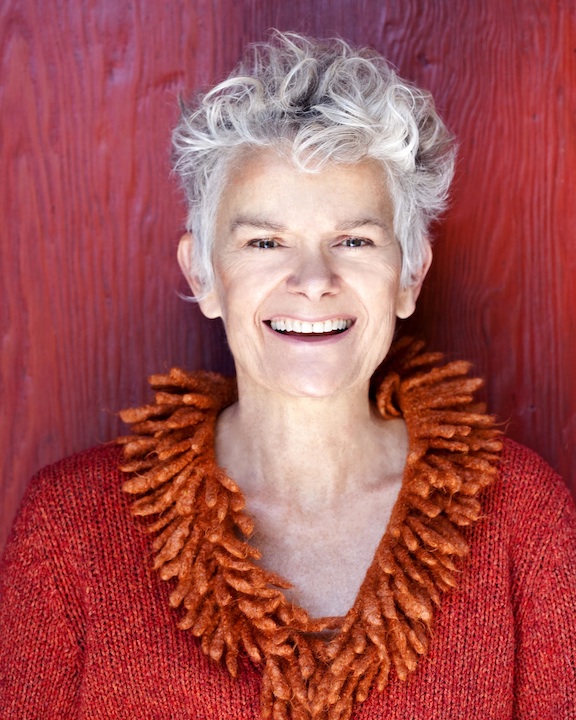
Galen Cranz is Professor of the Graduate School in Architecture at University California-Berkeley, a PhD sociologist, and a certified teacher of the Alexander Technique. She teaches social-cultural approaches to architecture and urbanism, emphasizing user experience and Body Conscious Design. She has been active in EDRA since 1971, presented “Design and Somatic Experience” at two ANFA conferences, and now teaches in Moving Boundaries—a course for Architecture and the Human Sciences including neuroscience. Her publications include Ethnography for Designers, Environmental Design Research: Bodies, Cities, and the Buildings Inbetween, The Chair: Rethinking Culture, Body and Design, The Politics of Park Design: A History of Urban Parks in America. She has designed parks, playgrounds, chairs, a house, and a bathtub.

Heidi Elnimr is an architect and researcher at the Vienna University of Technology (TU Wien) with 17 years of international experience in architecture, interior design, technical details, and project management. Currently, she is part of an exciting project called "Smart Healthy Age Friendly Environments (SHAFE)." This project is part of NET4Age-Friendly COST Action. Heidi has broad experience in healthcare architecture and is developing her experience through research.

Haripriya Sathyanarayanan is a PhD Candidate in Architecture (Building Science & Sustainability) at the University of California, Berkeley with a designated emphasis in New Media. With a background in architecture, sustainable design consultancy, and teaching, her research focuses on evidence-based design and enhancing the patient experience in pediatric patient rooms. Haripriya employs an interdisciplinary approach, utilizing collaborative design processes, immersive technology, and biofeedback for patient engagement. As a PhD Intern at the Pacific Northwest National Lab (PNNL), she further enriches her expertise in the field of Building Simulation & Design. With a Master of Science in Building Science and a Bachelor of Architecture, Haripriya has received prestigious awards for her exceptional research efforts and also serves as a Professional Development Liaison and mentor, actively supporting her fellow students. Haripriya's accomplishments include receiving the Regents Fellowship from UC Berkeley, prestigious awards for her ongoing dissertation, and certifications such as EDAC, LEED AP (BD+C), and WELL AP, demonstrating her commitment to sustainable and human-centered design approaches.

Kathryn Finnigan is dedicated to contributing to the development of inclusive, equitable, and healthful environments. With a Bachelor of Science in Natural Resource Planning and Interpretation from Cal Poly Humboldt, her work history spans various roles within local and federal government agencies, nonprofit organizations, consulting environments, and as an independent contractor serving a diverse range of clientele. Later, she pursued her Master of Landscape Architecture at the University of Colorado, where she received several student awards for her qualitative thesis study exploring the interplay between sensory sensitivities and outdoor environments among neurodivergent individuals. She is nationally recognized as the 2022 LAF National Olmsted Scholar, which acknowledges her leadership potential, as well as her ideas, influence, communication, and public service that foster human and societal benefits. She is using insights from her thesis study to inform a new project as an LAF Fellow for Innovation and Leadership.

Colin Polwarth is a Registered Architect with over 30 years of experience in the design and management of a wide variety of built infrastructure projects. He is the Director of Studio Colin Polwarth which specializes in architecture, infrastructure design, urban design, master planning, and transdisciplinary expertise in art. Colin is an A+ member of the Australian Institute of Architects (RAIA), a UK Urban Design Group Recognized Practitioner and Practice Member, an Affiliate of the Australian Institute of Landscape Architects, and an Environmental Design Research Group Member. He is currently a PhD Candidate at the Royal College of Art, London, researching connected autonomous vehicles, the city, and semiotics.

"New Understanding of the Role of Cognitive Maps in our Experience of Space"
Exploring and recalling architectural space is typically thought to involve the creation and use of a ‘cognitive map’. Cognitive maps have been extensively studied in neuroscience in relation to navigation and memory; however, they can involve much more than just a spatial layout in the form of a map for getting from A to B. Internal maps are likely rich and entwined with abounding information about intangible spatial qualities and interactions. Our group will present evidence of how we can relate spatial mapping in neurons to small-scale architectural experience, mass population behavior on an urban scale, or to questions of aesthetics and affect in architecture. We will further speculate on how cognitive maps might be considered in relation to architectural concepts and experiences of space(s), such as social space(s), threshold space(s), liminal space(s), permeable space(s), positive and negative space(s), atmospheres, or extended space(s).
Fiona Zisch; Sean Hanna; Kate Jeffery; Sam McElhinney; Hugo Spiers
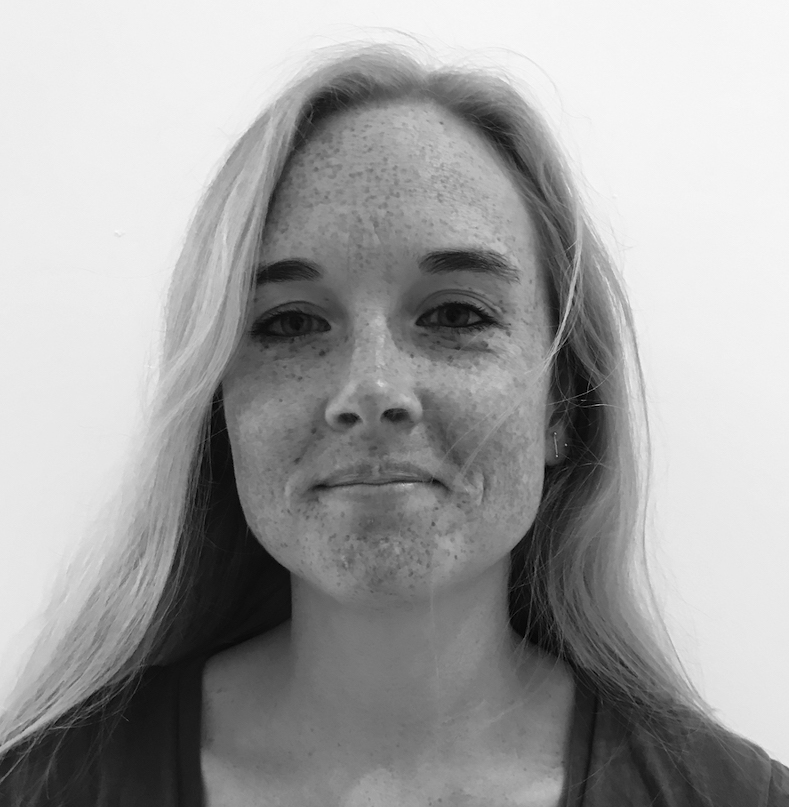
Fiona Zisch (Team Co-Leader) is Programme Director on the Bartlett School of Architecture’s transdisciplinary MArch Design for Performance and Interaction at University College London. Fiona leads the research group bodyLAB and, together with Hugo Spiers, chairs the UK chapter of ANFA. Her research explores cognitive ecologies with a focus on intuition and radical (4EA) embodiment, neurorehabilitation spaces in physical and virtual – and eXtended – environments, as well as how ‘neuroarchitecture’ as transdisciplinary threshold might develop more wicked thinking.

Hugo Spiers (Team Co-Leader) is Professor of Cognitive Neuroscience in the Department of Experimental Psychology. He leads the UCL Spatial Cognition Research Laboratory and is a Fellow of the Royal Institute of Navigation. His research explores how our brain constructs representations of the world and uses them to recall the past, navigate the present, and imagine the future. His research team uses a range of methods, including brain imaging, neuropsychological testing, virtual reality, agent-based modeling, and single-cell recording to understand brain function and spatial cognition.

Sean Hanna is Professor of Design Computing and Director of Research at the Bartlett School of Architecture, University College London, and a member of the UCL Space Syntax Laboratory. His research is primarily in developing computational methods for dealing with complexity in design and the built environment, including the comparative modeling of space, the use of machine learning and optimization techniques for design and fabrication, and the analysis of human movement.

Kate Jeffery is a medically qualified neuroscientist who studies rats to find out how sensory information is assembled by the brain into more complex, cognitive representations of the world. Her research focuses on the “cognitive map,” which is formed by the hippocampus and associated structures and underlies our sense of direction and sense of place. She is also interested in the link between architecture, the experience of place, and the representation of space in the brain, and is researching this using virtual reality.

Sam McElhinney is Associate Professor and Programme Director of Architecture at the Canterbury School of Architecture, part of the University for the Creative Arts. He is an Architect, educator, and researcher with a particular interest in spatial cognition. He runs isovists.org, a free software platform for advanced spatial analysis.

"Social and physical affordances: a cognitive and neurobiological perspective"
The concept of physical affordances, developed by psychologist James J. Gibson, highlights how the physical world shapes human actions. Research on canonical neurons in the brain shows how physical features of objects are translated into suitable motor actions. Social affordances refer to opportunities for social interaction and joint activity, found in physical and virtual environments. They influence how individuals perceive and respond to social cues, shaping social interaction. Neurobiology studies reveal the interplay between perception, action, and cognition in both physical and social affordances.
Vittorio Gallese, Luca Bonini, David Kirsh

Vittorio Gallese MD (Team Leader) and trained neurologist is Professor of Psychobiology at the University of Parma, Italy where he is Director of the Lab of Social Cognitive Neuroscience, Fellow at the Italian Academy of Advanced Studies in America of Columbia University, New York, USA, Honorary Fellow of the Institute of Philosophy of the School of Advanced Study of the University of London, UK, and honorary member of the American College of Psychiatrists. Cognitive neuroscientist, his research focuses on the relation between the sensorimotor system and social cognition by investigating the neurobiological grounding of intersubjectivity, psychopathology, language, and aesthetics. He is the author of more than 300 scientific publications and three books.

Luca Bonini earned his degree in Psychology (2003) and Ph.D. in Neuroscience (2008) at the University of Parma, where he is now Full Professor of Psychobiology and Physiological Psychology in the Department of Medicine and Surgery. He has authored numerous scientific publications focused on the neuronal mechanisms underlying motor, perceptual, and cognitive functions of various brain regions, using the monkey as an experimental model.
In the last years, thanks to national and international collaborations and with the support of the European Research Council, he and his lab are developing new approaches for recording the activity of several individual neurons simultaneously, with chronic implants, in freely-moving animals. These latter innovations constitute the necessary premises for the neuroethological study of the neural underpinnings of natural behaviors in as much as possible close-to-natural situations, contributing to the refinement of brain research in non-human primates.

David Kirsh is currently the President of ANFA. He is a Professor & past dept chair at Cognitive Science, UCSD, and runs the Interactive Cognition Lab where the focus is on the way humans interact with the outside world, especially architectural spaces and thinking environments. He is on the research staff at Zaha Hadid Architects. From 2017-19 he was Leverhulme Visiting Professor at The Bartlett School of Architecture Univ College London. He received a D. Phil. from Oxford Univ in Philosophy & Cognitive Science, did post-doctoral work in Artificial Intelligence at MIT (AI Lab), and held research and Visiting Professor positions at MIT (Computer Science), Stanford Univ (Graduate School of Education, Computer Science, Music upcoming), Univ College London (UC Interactivity Lab Computer Science, Architecture), Paris Univ (Sociology, Computer Science), and was Adjunct Prof in Dance at Trinity Laban Conservatoire of Music and Dance, London for many years.

"Discover the Evolving World of Sensory-based Design at ARUP"
Discover the evolving world of sensory-based design at ARUP. Topics include integrating biometric monitoring, surveys, and field measurements into project delivery.
- How to calibrate multisensory simulations (hearing, feeling, vision) to effectively communicate project experiences to architects, clients, and stakeholders.
- How to uncover opportunities and challenges as these techniques advance, optimizing designs and deepening client understanding.
- Learn from completed projects, including lighting in urban environments, sound and light impacts on health, and multisensory biophilic design.
Shane Myrbeck; Raj Patel

He has created groundbreaking immersive tools for listening to, feeling, and visualizing the built environment during the design process, co-creating the pioneering Arup SoundLab and Arup ExperienceLab, unique tools to create accurate audio and visual renderings of 3D space, allowing clients to experience and listen to buildings before they are built as a means of enhancing the collaborative design process.
This knowledge has also been applied to conceive and create spaces specifically for the development and presentation of immersive spatial and 3D audio/video works and multimedia installations.
His collaborative works with a diverse range of artists, including Ai Weiwei, Phillip Glass, Lou Reed, Scott Walker, Bjork, Nick Cave, Dough Wheeler, and James Turrell, have been presented in a range of spaces, including the Tate Modern, The Whitney, MoMA (NY), The Sydney Opera House, and The British Film Institute.
His collaborative projects with the artists Iain Forsythe and Jane Pollard are notable for their pioneering use of spatial sound and include The Horror Show (2022), Ambisymphonic Bish Bosh (with Scott Walker) (2013), Soon (2011), The Death of Bunny Munro (with Nick Cave) (2009), Radio Mania and Abandoned Work (2009), and Silent Sound (2007). A Fellow at Arup, the renowned design firm, he leads multidisciplinary teams through project conception, ideation, planning, programming development, design, construction, and post-completion works.

Shane Myrbeck (Team Co-Leader) is a designer of acoustic and digital space based in Los Angeles. As a sound artist, Shane’s work explores the visceral and immersive nature of sound through spatial audio systems and architectural form; he engages its uncanny ability to transform and direct experience.
As an Associate Principal at the global architectural engineering firm Arup, he is a project design lead and valued creative mind. In addition to acoustics, audiovisual and theatre consulting work, Shane’s global role in the Arup SoundLab includes efforts in psychoacoustic and biophilic design research, acoustic simulation of architectural spaces, game engine-based virtual design, soundscaping, and new compositions. Some of Shane’s Arup work has included projects with Björk, SFMOMA, Google, the Lighthouse for the Blind and Visually Impaired, Lou Reed, TED, SFOpera, and Refik Anadol.
His artwork has been exhibited at the Huntington Gardens, World Science Festival, Dolby Gallery, the Intrepid Sea, Air and Space Museum, Goldenvoice’s Panorama Festival, Fort Mason Center, Gray Area Foundation for the Arts, California Academy of Sciences, the Contemporary Jewish Museum SF, IBM Tokyo, and many other spaces. Residencies include Montalvo Arts Center, San Francisco’s Exploratorium, and NASA’s Jet Propulsion Laboratory.

"The Role of Visual Cues and Impact of Aging on Spatial Navigation Abilities"
This research investigates the impact of aging on spatial navigation abilities and the role of visual cues in guiding navigation behavior. The findings reveal that older adults rely more on geometric cues and exhibit a bias towards attending to the lower part of the visual field. The team will present a series of studies exploring the use of geometric cues and landmarks and their influence on spatial decision-making in architectural spaces.
Denis Sheynikhovich, Stephen Ramanoel, Maram Alkochroum, Angelo Arleo
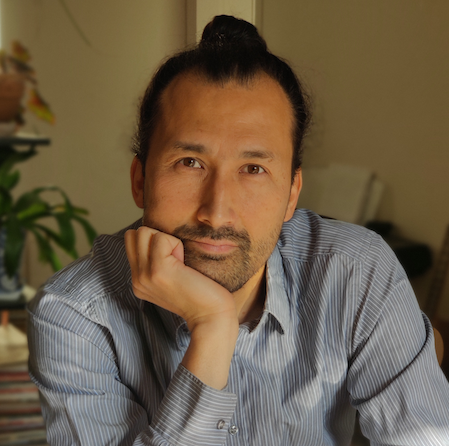
Denis Sheynikhovich (Team Co-Leader) is an associate professor at the Sorbonne University and a researcher at Vision Institute, Paris. The main focus of his research concerns the neural bases of spatial memory and behavior using primarily a computational modeling approach, but also using experiments in behaving humans. He obtained his PhD under the supervision of Wulfram Gerstner in the Laboratory of Computational Neuroscience at the EPFL, Switzerland, in 2007. He performed his postdoctoral research at the Institute of Intelligent Systems and Robotics (ISIR, Paris) and at the laboratory of Neurobiology of Adaptive Processes (University Pierre & Marie Curie, Paris). He received Habilitation to Direct Research (HDR) in Engineering Sciences in 2020 at the Sorbonne University.

Maram M. Alkhachroum is an architect M.A. / M.Sc. who has worked in architecture for ten years in several countries. In 2021, she proceeded with her passion for the link between architecture and neuroscience. She obtained her master's degree at ENSAL Lyon, France, accompanied by research at UCL, London, UK. Her second master's degree in cognitive science with a neuroscience major is from the PSL master's program in Paris, France. Her research addresses the effect of aging on spatial navigation in architectural environments.

Stephen Ramanoel is Associate Professor at University of Côte d’Azur LAMHESS, Nice, France, and affiliated with the Vision Institute, Aging in Vision and Action Lab, CNRS – INSERM – Sorbonne Université. His main interests are in the impact of human aging on vision. More specifically, the impact of healthy aging on cerebral bases, in relation to visual processing and spatial cognition, using several MRI approaches. His methods include advanced MRI data processing (pre-processing and statistical modelling) as well as optimization techniques.
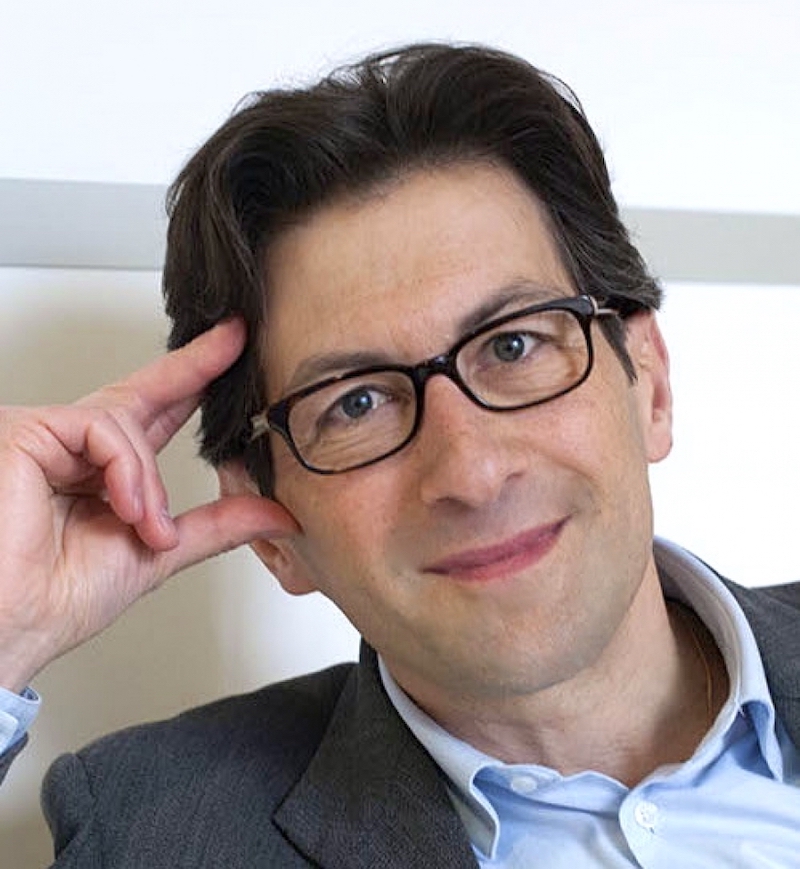
Angelo Arleo is Director of Research (DR2) at CNRS and a team leader at the Vision Institute, Paris, where he explores the perceptual and cognitive consequences of visual aging in humans. He is the Chairholder of the ANR–Essilor research chair SILVERSIGHT, which pioneers fundamental research on healthy visual aging, action, and autonomy to foster innovative health care developments. His research is primarily centered on the neural processes mediating multisensory integration, contextual learning, and spatial cognitive functions. His approach combines experimental neuroscience and computational modeling to cross-link different organization levels, from single cell to behavior. He received an MSc degree from the University of Mathematical Science of Milan, Italy, in 1996. He joined Wulfram Gerstner’s Laboratory of Computational Neuroscience at the EPFL (Swiss Federal Institute of Technology Lausanne, Switzerland), where he received his PhD in 2000. He did a postdoctoral training in experimental neuroscience in Alain Berthoz’s Laboratory of Physiology of Perception and Action at Collège de France, Paris, from 2001-2003. He worked as an associate R&D fellow at CSL Sony, Paris, from 2004 to 2006. He received his Habilitation to Direct Research (HDR) in Life Science from the University Pierre and Marie Curie, Paris, in 2005. He was appointed as a CNRS researcher in 2006. From 2007 to 2013, he directed the Adaptive NeuroComputation (ANC) group in the unit of Neurobiology of Adaptive Processes, directed by Jean Mariani, at the University Pierre & Marie Curie, in Paris. In 2012, he was appointed as a Director of Research at CNRS. In 2014, he joined the Vision Institute, directed by José-Alain Sahel, as the head of the new Aging in Vision and Action research lab.

"Advances in the Embodied Impact of Affordances"
Our team presentations explore the interactive relationship between human behavior and architectural environments. The concept of 'affordances' refers to the possibilities for action that the physical environment offers, and how these are determined by the fit between the body's structure and the environment. The presentation highlights studies that investigate the physiological and neural responses to different architectural configurations, such as the impact of open and closed spaces on stress levels, and how affordances are processed at an early perceptual stage. It also explores the relationship between the physical environment and human memory system using virtual reality technology. The integration of neuroscience, architecture, and psychology provides a comprehensive framework to understand the complex interplay between environment, brain, and behavior, offering innovative insights into designing spaces that align with human cognitive and emotional needs.
Zakaria Djebbara; Lars Brorson Fich; Dylan Chou Huynh

Zakaria Djebbara (Team Leader) is a postdoc researcher in the field of architecture and cognitive neuroscience at Aalborg University. He is a pioneer in the combination of Mobile Brain/Body Imaging and Virtual/Augmented Reality. His research primarily revolves around investigating sensorimotor responses relative to environmental characteristics, with a particular emphasis on the temporal aspects of phenomenology in architecture. By integrating various disciplines such as computational phenomenology, cognitive neuroscience, and ecological psychology, Zak endeavors to cultivate a profound comprehension of the intricate relationship between the brain and the built environment through an experimental approach.
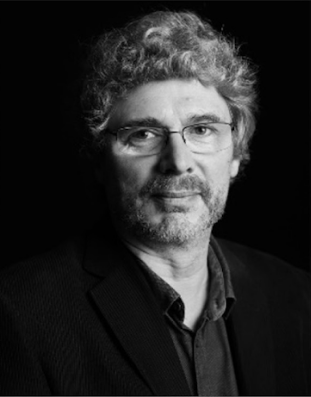
Lars Brorson Fich graduated as an architect in 1984, and has worked as a practicing architect until 2008, from 1998 – 2008 as a partner. During this period, he has designed well over 100 build projects, ranging from a museum to residential, commercial and hospital projects. In 2008 he became associate professor in architecture at AAU, where he leads a project on how the design of spaces influences the effects of stress.
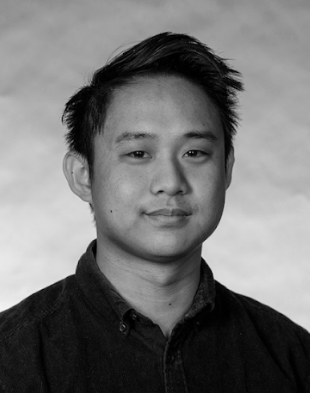
Dylan Chau Huynh: is an Urban Designer currently holding the position of Research Assistant at the department of Architecture, Design and Media Technology at Aalborg University. His research is on affordances in relation to human physiological and psychological response to space.

"Neuroscience Informed Research in Practice - A Look Behind the Curtain"
Discover how a global design firm integrates research into their practice!
- How deep dives, applied, and coalition-based research methods inform design throughout the project life cycle.
- Detailed case studies in healthcare, education, and workplace design, showcasing how research drives innovation.
- Learn about our measurement tools, frameworks, and the importance of research-informed approaches.
- Explore our unique journey and embrace the call for radical collaboration between academia, practice, and non-profit entities.
Dr. Deborah Wingler, Dr. Upali Nanda with supporting video vignettes from HKS researchers, designers, and clients

Dr. Deborah Wingler(Team Leader) is Principal and Research Practice Director for Health & Experience at HKS where she collaborates with research and design teams to develop and implement research initiatives that drive innovation and achieve a measurable impact across the healthcare practice, globally. She also holds an appointment as Adjunct Faculty in the School of Architecture at Clemson University. Through her research, Deborah has had the opportunity to work with some of the most forward-thinking Fortune 500 companies, healthcare organizations, manufacturers, and design firms in the industry to support their respective research agendas. Deborah holds several industry and academic awards. Most recently she was awarded HCD 10 researcher of the year for 2022 by Healthcare Design Magazine.

Dr. Upali Nanda is Principal and Global Director of Research for HKS, an international architectural firm where she is responsible for spearheading and implementing research projects globally. She also teaches as Associate Professor of Practice at the Taubman School of Architecture and Urban Planning at the University of Michigan and serves as the Executive Director for the non-profit Center for Advanced Design Research and Education. Her award-winning research around human health and wellbeing, neuroscience and architecture, and outcome-driven design has been widely published. In 2018, she was honored by Architectural Record with the Women in Architecture Innovator Award. Her research is situated at the intersection of human perception and design, focused on linking design to outcomes.

"Neurocognition for Human-Centred Architecture"
An interdisciplinary team, of experts from cognitive science, architecture, space syntax, and applied psychology, will investigate:
- How the architectural design of physical built environments impacts individual and group perception, cognition, behaviour, and health outcomes?
- How empirical findings regarding cognition and behaviour can be effectively integrated into architectural and urban design practices to create evidence-empowered and human-centred built environments?
- How evidence-based design tools affect design cognition, communication, and design outcomes?
Michal Gath-Morad, Christoph Holscher, Panos Mavros, and Ruth Conroy-Dalton

Dr. Michal Gath-Morad (Team Leader) is a registered architect and cognitive scientist, conducting her postdoctoral research in the Department of Architecture at the University of Cambridge and the Space Syntax Laboratory at University College London. She holds a BArch and an MSc in architecture (Summa Cum Laude) from the Technion, and a PhD in cognitive science from ETH Zurich. Her interdisciplinary research employs methods from cognitive neuroscience to tackle architectural design challenges for the generation of inclusive and legible built environments, with a particular focus on healthcare environments. The three major themes of her past and current research are understanding how architecture affects spatial cognition, translating behavioral findings to applied design tools, and analyzing how the use of evidence affects architects’ cognition, design communication, and design outcomes. To link her research with architectural design praxis and pedagogy, Michal holds a visiting researcher position in the urban design team at Foster + Partners in London and is a lecturer at ETH Zurich since 2019, where she leads a graduate module on evidence-based design in architecture.

Christoph Hölscher is a professor of Cognitive Science at ETH Zurich since 2013. At the Singapore-ETH Centre (SEC), he is Director of the Future Resilient Systems (FRS) programme and Principal Investigator of the 'Interactions with New Technology and Financial Systems' research module in FRS, as well as collaborator for the 'Estimating Economic Losses from Cascading Infrastructure Disruptions' project in FRS. He is involved in the Future Cities Lab Global, another SEC programme, as Co-Investigator of 'Dense and Green Cities' and 'A Neuroscientific investigation of the Interaction between Crowdedness and Environment typology' (NICE). Prof. Hoelscher was previously assistant and extra-curricular professor at the Center for Cognitive Science in the University of Freiburg, Germany. He received his Doctorate (2000) and Habilitation (2009) in Psychology at the University of Freiburg. He was a project manager in the IT industry from 2000-2003, specializing in user-adaptive systems and usability.

Panos Mavros is Assistant Professor in Ergonomics, Design and Digital technologies at Telecom Paris, Institut Polytechnique de Paris. He studied Architecture at the National Technical University of Athens (NTUA), Greece, Digital Media at the University of Edinburgh, UK. He completed his PhD at The Bartlett Centre for Advanced Spatial Analysis (CASA) at University College London, where he specialized in the perception and experience of urban spaces, focusing on spatial cognition research, and the use of psychophysiological methods, such as mobile EEG, as a way to understand the interaction between people and the environment. Previously he worked as a postdoctoral researcher for several years at the Future Cities Laboratory of the Singapore-ETH Centre, conducting research on the topic of Cognition Perception and Behaviour in Urban Environments. His research interests are the study of how people interact with their environments, in terms of cognition and behavior, and how to translate research into design practices.

Ruth Conroy Dalton is a British architect, author, and Professor of Architecture at Northumbria University. She has authored or contributed to more than 200 publications. She is an expert in space syntax analysis, pedestrian movement, and wayfinding and a world-leading authority on the overlap between architecture and spatial cognition. As a licensed architect, she has worked for Foster and Partners and Sheppard Robson Architects, and key projects upon which she has worked include the Carré d'Art de Nîmes in France and the Palacio de Congresos de Valencia in Spain. She has taught at the Architectural Association School of Architecture, Georgia Institute of Technology, the Bartlett School of Architecture, UCL, and Northumbria University, where she was Head of Department for the Architecture and Built Environment Department, the first woman to hold the post. In 2019, she became the Inaugural/Founding Professor of Architecture and the first Head of the Lancaster School of Architecture at Lancaster University, before returning to Northumbria University in 2022.